Do I Need A Double Plate To Add A Second Floor
1 / 14
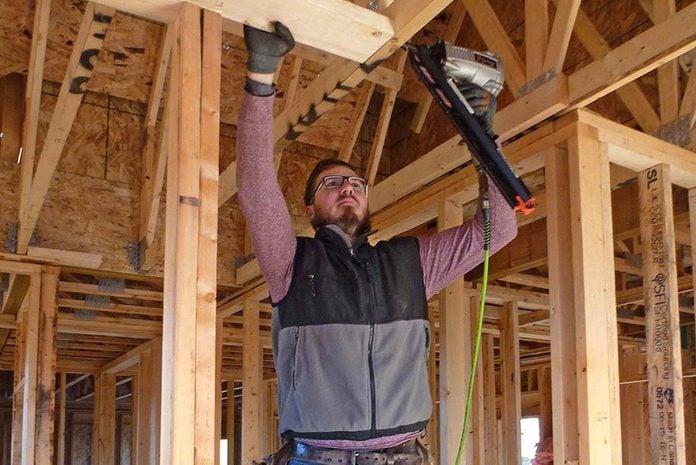
Avoid Framing Mistakes
Minor framing mistakes tin can lead to wavy walls and squeaky floors. More serious mistakes can leave a house vulnerable to loftier winds, heavy snow loads and earthquakes. We wanted to know which mistakes were the most common and how to avert them. So who meliorate to talk to than a edifice inspector? He shared his experiences, his insight and a few horror stories. We walked away with some neat tips on how to build a rock-solid house, build it code compliant and build it right the first time.
2 / 14
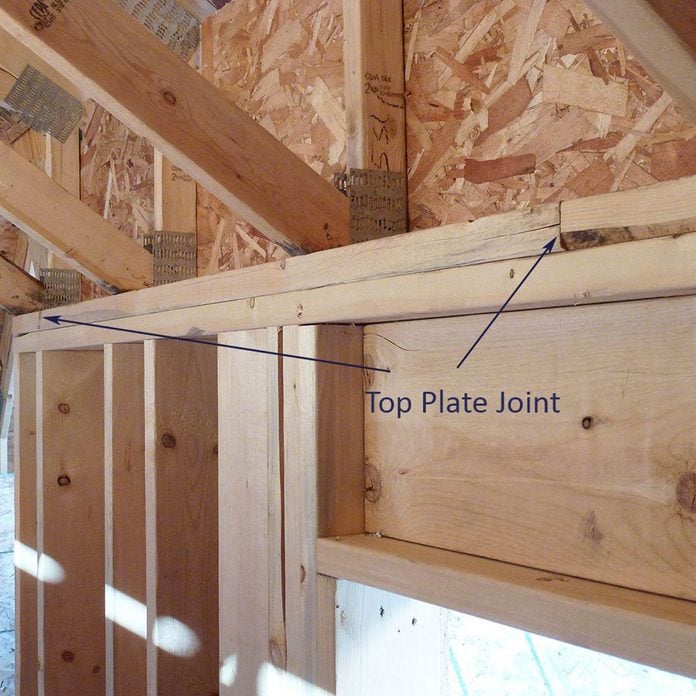
Don't Forget to Stagger the Joints in the Top Plates
It's best to have i continuous peak and necktie plate, but that's not possible on longer walls. When multiple plates are necessary, keep top plate stop joints a minimum of 24 in. away from tie plate cease joints. And proceed end joints at least 24 in. from the end of the wall as well. If the two end joints are non kept apart, they create a hinge point, which weakens the wall. Just 24 in. is a blank minimum; most conscientious framers prefer at to the lowest degree twice that distance.
3 / fourteen

Yous Shouldn't Simply Blast Through the Plywood
When you're securing the lesser plates of walls to the floor, nail into the floor joists/trusses beneath. Nailing through the plywood keeps the wall from moving side to side, just expansion and contraction of the roof system could cause the wall to elevator if information technology's non as well nailed to the flooring joists/trusses. Plus, the nails will be out of the way when contractors need to cutting holes in the plates for pipes, ducts and wires. For the same reason, nail pinnacle plates to overlying floor joists or roof trusses near studs whenever possible.
4 / 14
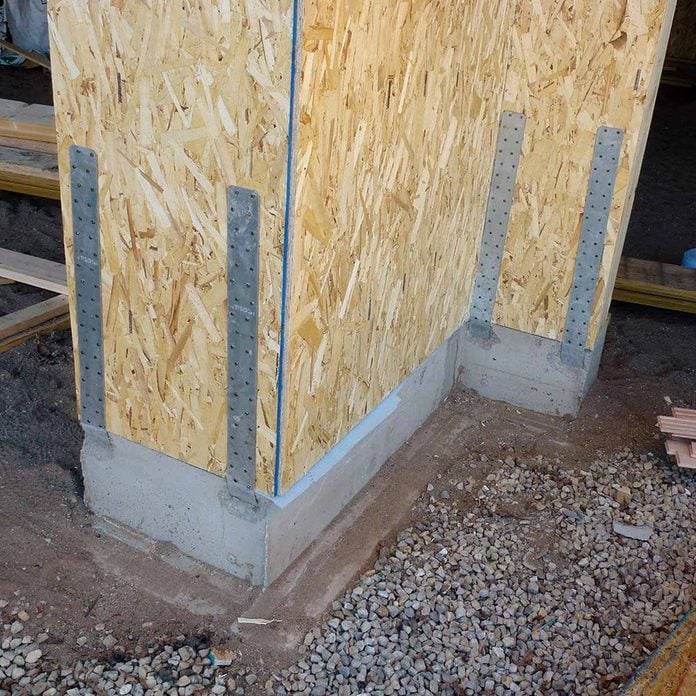
Don't Forget the Connectors
Structural connectors are designed to concur framing members to the foundation and to 1 another. They assist a building withstand heavy loads, strong winds and earthquakes. Building codes that require structural connectors accept been irresolute as connector engineering science improves, and then make sure to review your local codes and contact your local edifice section if you still have questions. The foundation straps shown here forbid high winds from bravado these pocket-size garage walls off the foundation.
5 / 14
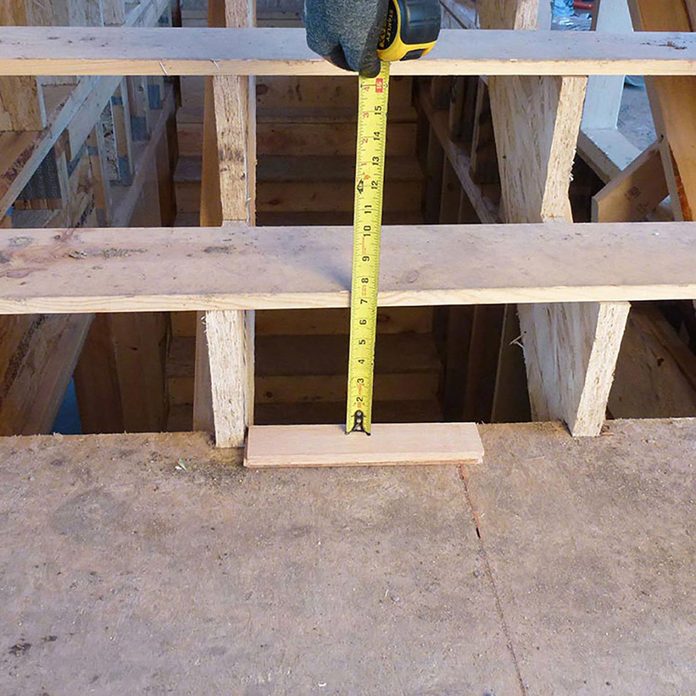
Remember to Account for the Finished Flooring When Laying Out Stairs
The highest riser (step) height cannot be more than 3/viii in. higher than the shortest riser height throughout the entire flight of stairs. Those measurements include finished floor heights. So mock up and plan for the concluding finished floor heights, top and bottom, before you begin doing the math and laying out the stair stringers.
Installing iii/4-in.-thick hardwood floors on a i/four-in. subfloor will raise a flooring height one in. Some carpet, vinyl and laminate floor options are less than 3/8 in. thick. If y'all don't account for those height differences, you could neglect your inspection, and ripping out stairs is an expensive callback.
6 / 14
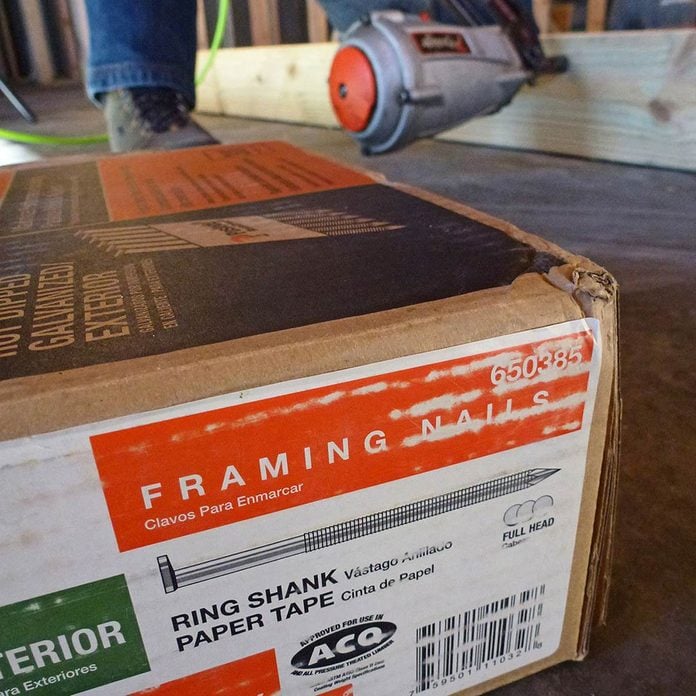
You Can't Just Use Any Nails With Treated Lumber
Today, treated lumber intended for residential construction is protected with a copper-based preservative system called element of group i copper quaternary (ACQ). Whenever you're working with ACQ lumber, be certain to apply only ACQ-approved nails. ACQ treated wood is extremely corrosive to standard framing nails; they will really dissolve when in direct contact with ACQ lumber. And if there are no nails holding wall studs to a treated lesser plate, foundation bolts/anchors are ineffective. It's also important to use ACQ nails to secure the sheathing to a treated bottom plate.
7 / 14

Yous Must Double Up Jack Studs
Jack studs, or "trimmers," are the framing members that support headers. The number of jack studs needed depends on the length (and sometimes the width) of the header. If the blueprints don't specify, a proficient dominion of thumb is to install 2 on each side if the opening is wider than 6 ft., the typical patio door size.
8 / 14
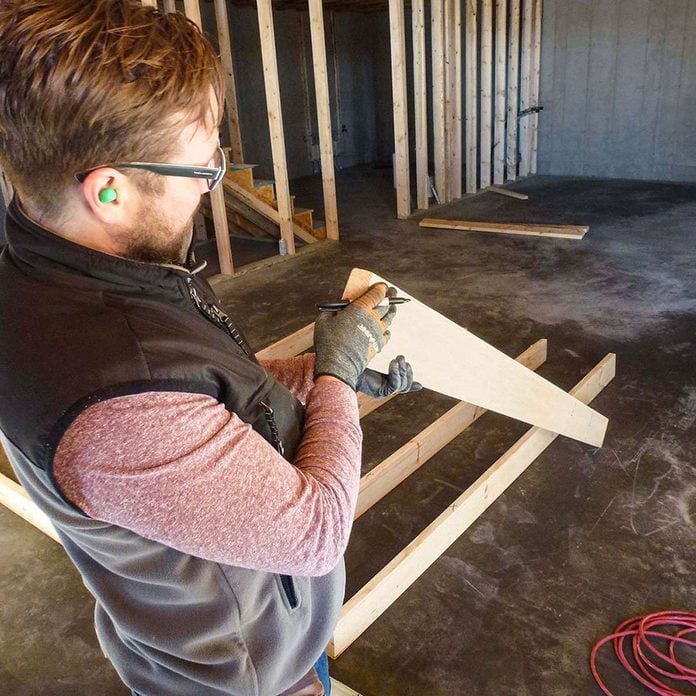
Don't Forget to Check for Crowns in the Studs
This may seem like a "duh" tip, but some carpenters don't take the time to bank check the crown (bow) in every stud earlier assembling a wall. No one volition detect if ii studs with a 1/iv-in. crown are aligned the same way. But if those same studs are installed on contrary sides of the wall, that 1/2-in. difference volition exist noticeable on both sides of the wall. Also, the studs may continue to warp as they dry, making the wave even more prominent. When you're assembling walls on the ground, keep the crown side upwards. If the crowns confront down, the studs behave like a rocking chair and brand it harder to gather the wall. Some builders use engineered lumber on walls where cabinets will be located because it's super straight and stable.
ix / 14

Always Recollect Squash Blocks to Carry Loads
When a heavy load-bearing axle sits atop a wall, extra studs are needed to help conduct that "point load" downward to the bottom of the wall. Simply the story doesn't finish there; that load has to be carried all the way down to the foundation. Squash blocks are oft required to bridge the gap betwixt a beam-supporting wall and the wall below it.
10 / xiv

Don't Forget Drywall Backing
Most framing assemblies require actress backers to secure the drywall. Even if you're conscious of installing drywall backers equally yous build, it'due south easy to forget a section at present and again. Don't treat missing backers lightly; they can be a lot more difficult to install if in that location are wires, pipes or ducts in the style. Also, a grumpy drywall guy may have to rip off moisture bulwark, pull out fiberglass insulation or flake out spray cream in order to hang the drywall. To make certain all the bankroll is there, one simple fox is to walk from room to room and browse every single wall and ceiling intersection with the thought of hanging drywall. And don't forget the closets.
11 / fourteen

Don't Install Joists Under Toilets
All blueprints should indicate the size and spacing of floor joists/trusses, but many don't spell out their exact locations. Avoid installing flooring joists/trusses direct in the path of large drainpipes and mechanical chases. Toilet locations usually cannot be moved, which ways the plumber will have to cut into a joist/truss, which can mean hiring an engineer to design a repair, which takes time and costs money.
12 / xiv
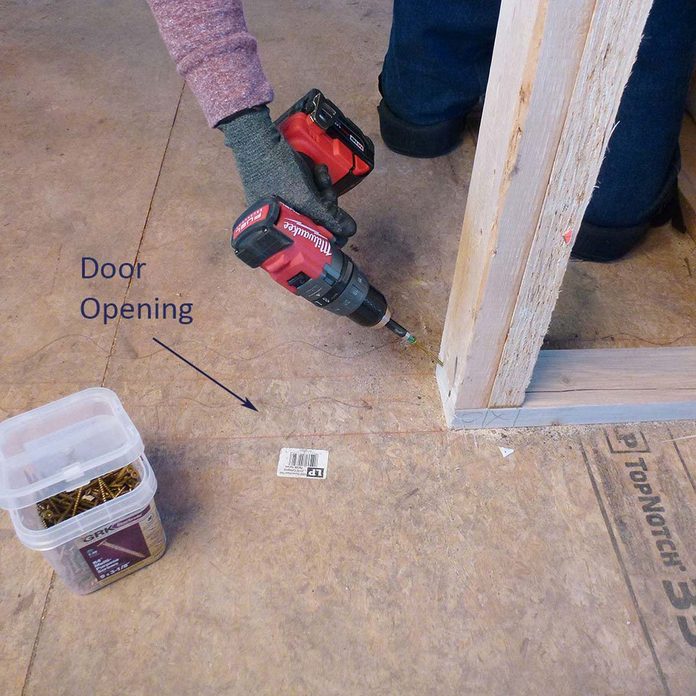
You lot Must Reinforce Doorway Walls
A wall that supports a door takes a lot of abuse. Some solid-cadre doors weigh more than 100 lbs. Add an emotional, door-slamming teenager, and you take a door frame that needs to withstand a lot of force. It's important to add extra support to doorway walls, both on the hinge and on the latch side. Do that by applying construction adhesive under the bottom plate on each side of the opening and past adding a couple of 3-in. toe screws.
13 / 14
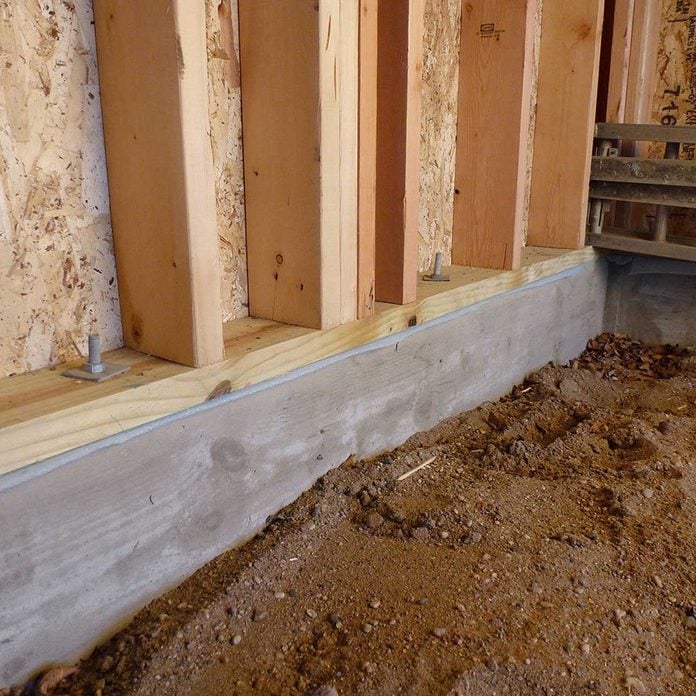
Talk to the Masons to be Certain Anchors are Where They Belong
Run into with the masons before they build the foundation. They should know that anchor bolts are required to secure wall plates every 6 ft. on center and inside 12 in. from the ends and each side of joints. Only sometimes anchors stop up where they don't vest, like in door openings or under jack studs. A short meeting to discuss locations of openings and splices could spare you lot from cutting out misplaced anchors and installing new ones.
14 / 14
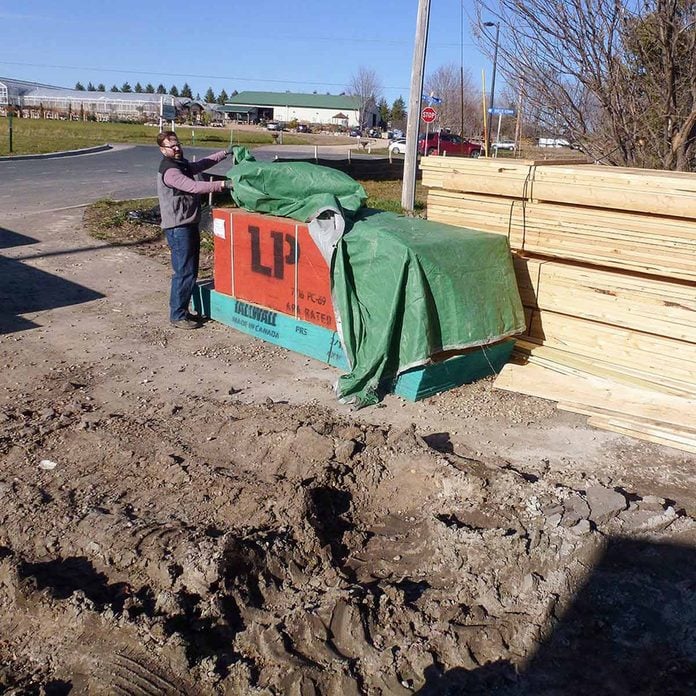
Never Forget to Shelter Your Materials
A piffling moisture isn't going to hurt virtually building materials, but if a projection is delayed or you know you're in for a long run of wet weather, comprehend your materials with a tarp. Long exposure to moisture conditions can promote mold likewise every bit cause engineered lumber to delaminate and framing lumber to warp and twist. Plus, no one wants to work with wet lumber! Proceed the tarp a little loose at the lesser for air circulation.
Originally Published: November 14, 2019
Do I Need A Double Plate To Add A Second Floor,
Source: https://www.familyhandyman.com/list/14-framing-mistakes-to-avoid-at-all-costs/
Posted by: stewartworge1974.blogspot.com


0 Response to "Do I Need A Double Plate To Add A Second Floor"
Post a Comment